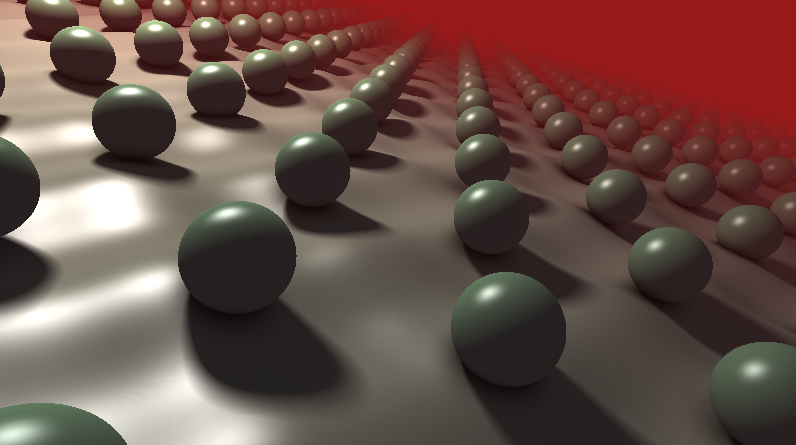One of the features of ray marching is that you can use modulus to repeat shapes infinitely, like in the image below, which is from https://www.shadertoy.com/view/MsBGW1
I was curious if there exists any technique which allows you to do the same thing with ray tracing instead of ray marching?
One method I do know of is to ray trace a plane from above, and then where you hit the plane, calculate your location on a grid on that plane, and use the relative position in that grid cell as an absolute position to raytrace a scene. That will repeat the scene across the grid.
However, a problem with that is if your ray doesn't hit anything in the grid cell, and it would then enter another grid cell, this technique won't catch those other shapes without walking the grid cells down the path of the ray until it exits the back side of the grid, which is very ray-marching-esque and iterative.
Does anyone know of a technique that allows you to have ray marching type repetition in ray tracing?
